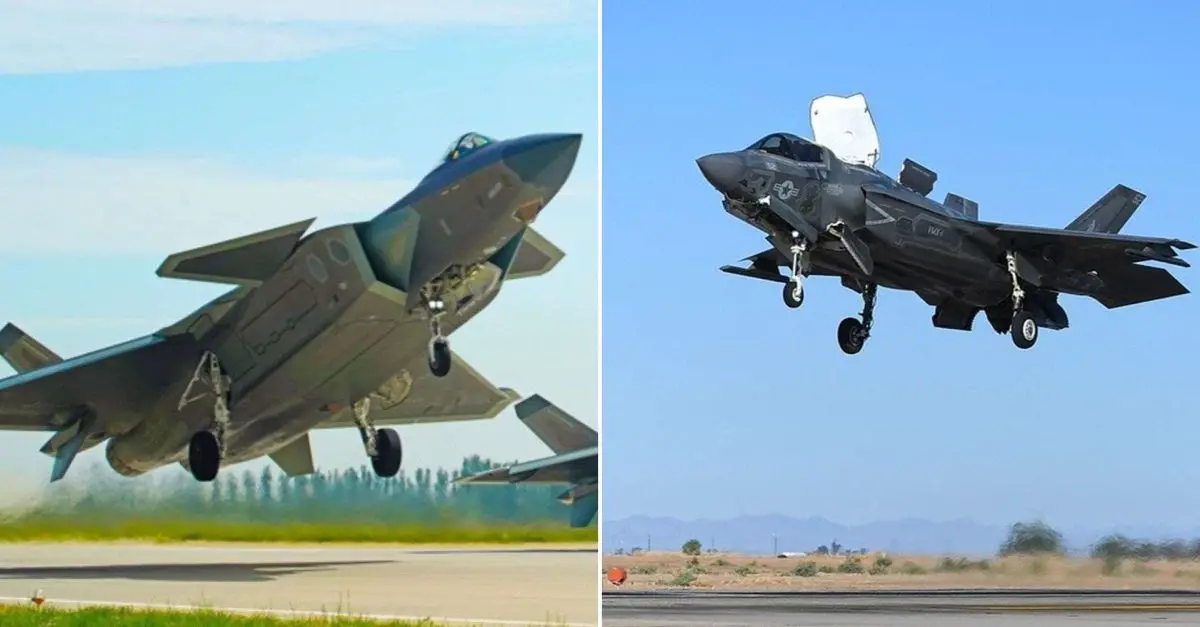Breaking news
UAE Contemplates Chinese J-20 Fighters as an Alternative to F-35 Amid Deal Challenges.
Amidst the complexities of the F-35 acquisition deal, the United Arab Emirates (UAE) is reportedly considering the Chinese J-20 stealth fighters as a potential alternative, as reported by the diary The National Interest. This consideration comes as the chief of joint operations of the Emirati Armed Forces visited Beijing on April 23. Despite Israel's recent approval of the F-35 sale to the UAE—an endorsement tied to a broader normalization of relations between Israel and the UAE formalized on August 13, 2020—the F-35 acquisition has encountered numerous hurdles. These include Israel's concerns about maintaining its qualitative military edge, issues related to human rights practices, and the UAE's technological links with China, particularly its refusal to sever their agreement with Huawei.

The Chengdu J-20 takes off for a flight training exercise in early February of 2024 (left) and the F-35B Lightning II onboard Naval Air Facility (NAF) El Centro, Feb. 26, 2021 (right) (Picture source: Chinese MoD/US DoD)
In November 2020, the Trump administration initially approved the sale of up to 50 stealth F-35 fighters to the UAE in a deal valued at $23 billion, aimed at boosting the UAE's military capabilities amidst growing regional uncertainties. However, the deal faced multiple challenges and was subsequently frozen by the Biden administration in 2021, citing various concerns including potential Chinese espionage through Huawei's 5G technology, which could compromise the advanced systems of the F-35.
The growing frustration of the UAE over the stalled F-35 deal has led them to explore other options, including the Chinese J-20 fighter. The visit of the UAE's chief of joint operations to Beijing in late April to meet the commander of the Chinese Air Force indicates a potential pivot towards Chinese military technology amid the ongoing impasse with the United States.
The F-35 Lightning II, produced by Lockheed Martin, is a fifth-generation stealth fighter first introduced in 2006. Designed to perform multiple military roles including air superiority, ground strikes, and reconnaissance missions, the F-35 is notable for its advanced stealth technology, reducing its radar visibility. It is equipped with sophisticated avionics, data-link capabilities, and sensor technology, providing high situational awareness on the battlefield. The F-35 also boasts supersonic flight capability and versatility, capable of operating from aircraft carriers and short airstrips through specially designed variants.
The Chengdu J-20, produced by Chengdu Aircraft Industry Group in China, is also a fifth-generation stealth fighter, which became operational in 2017. Designed for air superiority and strike missions, the J-20 emphasizes stealth and speed, with an aerodynamic configuration that allows it to achieve supersonic speeds without afterburners. Comparatively, the J-20 is often equipped with long-range missiles, suggesting a strategy focused on engaging targets at a distance, whereas the F-35 relies on its versatility and network integration to dominate in various combat scenarios.
The economic ties between the UAE and China have strengthened, with China being the UAE's largest non-oil trading partner globally. For instance, the UAE recently acquired Chinese Hongdu L-15A Falcon jet trainers. This relationship extends beyond commerce into strategic military engagements. In 2021, US intelligence discovered a Chinese military installation in a UAE port, indicating deeper military cooperation between the two nations. Although the UAE halted the project at the US's request, reports suggest that construction resumed in late 2022. Moreover, the UAE has abandoned any partnership with Russia in aviation following the underperformance of Moscow's fighters in Ukraine.
The UAE's interest in the J-20 is part of a broader strategy to diversify its military acquisitions. The Chinese J-20, known for its stealth capabilities, represents a significant shift in the UAE's defense acquisition strategy, which historically included Western aircraft such as the F-16 and the French Mirage 2000-9. This move towards Chinese military technology could potentially alter the power balance in the region and affect future US military sales in the Middle East.
As the UAE continues to assess its military needs against the backdrop of regional security challenges, the decision to acquire J-20 fighters from China could have significant implications for US-UAE relations and the geopolitical dynamics of the Middle East. The outcome of these negotiations will likely reflect broader shifts in global military alliances and procurement strategies. However, integrating such aircraft with other assets in their air force could be challenging, and China does not appear to have ambitions to export this type of aircraft, preferring the FC-31. Additionally, discussions with China could also serve as a means for the UAE to pressure the United States due to the blockage of the F-35 deal.






















